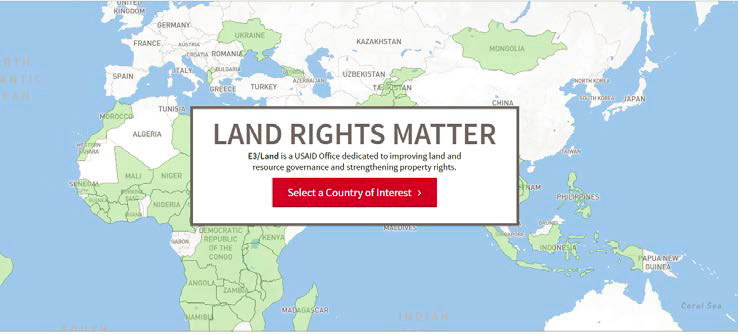
In 2016, ERC with subcontractor Bixal, redesigned and rebranded the USAID Land Tenure website. Beginning in May, ERC and Bixal worked with USAID’s E3/Land Office to identify website priorities, functionality requirements, and to understand how stakeholders, including other USAID Bureaus, interact with the site. The goals for the website were to create a visually appealing site that can be used to communicate USAID activities in a way that is clear and compelling, to share research and data, and to promote the office’s vision and agenda.
To make ongoing maintenance and continuous upgrades efficient and cost effective, the website was moved to a WordPress publishing platform, allowing the site to utilize out of the box templates and plugins. The site was given a responsive design, making it friendly for mobile devices. The homepage was redone to showcase USAID’s cross-sector impacts, recent content, and features an interactive map that links to Land Tenure projects, impact evaluations, and country profiles. The website’s search function, navigation, and content organization were updated, making the content flow more intuitive and materials easier to find. New content was developed for the primary menu pages, providing stakeholders with an overview of land tenure and information on the tools and resources available for USAID staff and global development professionals. A new color palate consistent with USAID’s branding standards was implemented and the website was rebranded as LandLinks, allowing the website to be easily identified as related to other USAID sites, including Agrilinks, Microlinks, and Climatelinks.
The website redesign was completed on October 11. The new website was promoted via a dedicated email and social media. The same month that the new LandLinks.org was launched, website traffic reached 9,887 user sessions, indicating how many times the website was being used. This is the highest number of sessions in the portal’s entire history.

